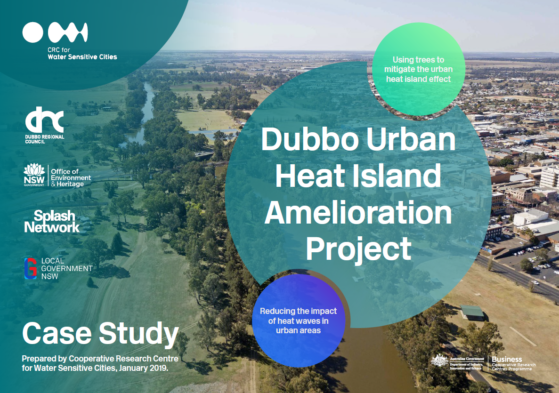Dubbo urban heat island amelioration project
Dubbo urban heat island amelioration project
Urban development, to cater for a growing urban population, replaces natural vegetated landscapes with roads and buildings. These impervious (hard) surfaces absorb heat but do not store water, leading to higher urban temperatures known as the ‘urban heat island (UHI) effect’. Heat waves combined with higher urban temperatures increase the risk of heat related illnesses and mortality in our cities (Nicholls et al., 2008). Urban planners must consider effective measures for planning our cities, to minimise the heat–health risks, using a variety of active and passive design measures that are also affordable (Tapper et al., 2016).
The Dubbo Urban Heat Island Amelioration Project Case Study shows how implementing cooling strategies such as increasing urban canopy cover, in an area of high heat exposure, with a high vulnerable population (e.g. elderly) and behavioural exposure (where people are outside and active), can improve human thermal comfort.
